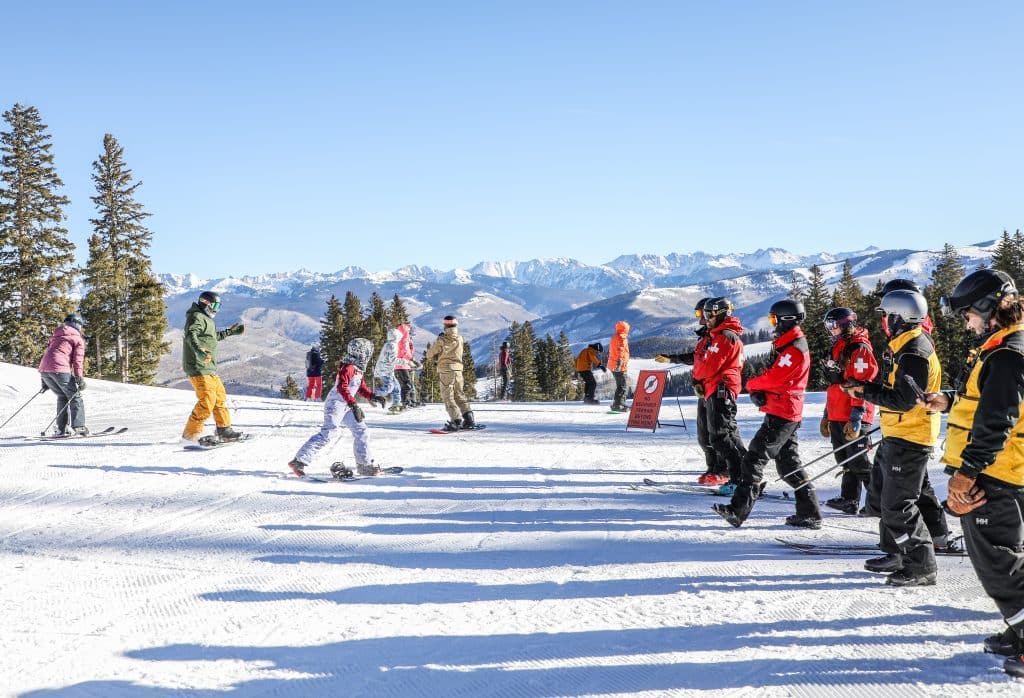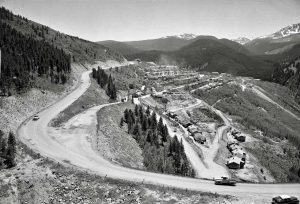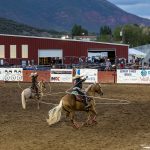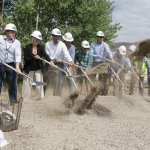New judge in Vail Resorts labor violations lawsuit asks a few key questions
Case receives a substantive hearing in U.S. District Court in Colorado

Chris Dillmann/Vail Daily archive
Vail Resorts is awaiting answers in two different lawsuits in which thousands of employees are alleging labor law violations, including failure to pay all hours worked, and failure to reimburse for necessary training and equipment.
One of those cases is being heard in U.S. District Court in Colorado, and has been assigned a new judge in recent months. The former judge, Judge Gordon Gallagher, was promoted to a new federal judgeship position in March, and Magistrate Judge N. Reid Neureiter has taken over the U.S. District Court case in Colorado.
In getting caught up on the status of the case on Wednesday, Neureiter asked attorneys a few key questions that have been on the minds of many following the lawsuits, leading to one of the most substantive discussions yet to occur in the Colorado case, which has been years in the making.
The federal case in Colorado can’t be unpacked without understanding details from Vail Resorts’ other labor lawsuit in California, which involved a class of more than 100,000 workers from 16 different states, yet was not heard in federal court, instead being settled in California state court. That prompted Neureiter’s first question, just 10 minutes into Wednesday’s hearing.
“You decided to go forward with a state court settlement (in California) rather than a federal court settlement — why was that?” Neureiter asked Vail Resorts’ attorneys on Wednesday.

Support Local Journalism
‘That is exactly what happened’
Neureiter prefaced the question by noting that the workers’ attorneys had been focusing on that point.
In a brief filed in November, the workers’ attorneys — quoting law review articles — said “complex interstate class actions belong in federal court” because (quoting an NYU law review article) “federal courts have institutional advantages over state courts. Their staffs are better equipped to deal with complex litigation in an efficient manner. They also have more experience in general with complex litigation and the difficult choice of law issues often presented. Moreover, federal courts employ more rigorous certification and settlement approval procedures and are often more vigilant in protecting the rights of class members.”
The workers’ attorneys said defendants often make a low-ball offer in state court proceedings in an effort to settle the class claim for far less than it is worth, which creates a reverse action (now quoting a Boston University law review article) “pitting the various class counsel against one another and agreeing to settle with the lawyer willing to accept the lowest bid on behalf of the class.”
Since “class counsel in dueling class actions are under such enormous pressure to settle with the defendant quickly, they often begin negotiations before they have undertaken substantial discovery and therefore are not well positioned to assess the strength and value of the class’s claim,” according to the Boston University Law Review article.
And “That is exactly what happened (in the California case),” the workers’ attorneys said in the brief filed in November.
A major criticism of the settlement in Vail Resorts’ California case alleged that the settlement was “pennies on the dollar” when compared to what employees felt they were owed, evidenced by the fact that an unusually large number of employees — approximately 1,600 — opted out of the suit. That led to another question from Neureiter:
“Opt-out percentages are typically very low, this one seems high … how did that number get so high?” Neureiter asked the plaintiffs’ attorneys.
Neureiter suspected that there must have been another factor aside from the standard opt-out procedure being sought, an astute suspicion as, indeed, an entire website was set up by an anonymous worker to encourage employees to opt out after the opt-out procedure was criticized as being difficult to navigate by those who went through it.
The settlement hearing revealed that a website for employees to opt in, which was set up by the settlement administrator, did not include a similarly situated opt-out button next to the opt-in button, and also didn’t — upon publication — include a copy of the settlement to which the employees would be agreeing if they consented to join the settlement.
“Had communication been clear and correct from the start, and opting out as easy as clicking the big green consent-to-join button, the balance of consent to join versus opt out would be dramatically different,” one Vail Resorts employee said at the settlement hearing, suggesting the opt-out rate would be even higher if doing so wasn’t made difficult by the settlement administrator.
The opt-out website was highly critical of the California settlement.
“What happens when you opt in? You get about $0.05 for every $1.00 Vail should have paid you. The attorneys get paid $4,366,666.67. And Vail laughs all the way to its next annual meeting, noting that it disposed of a potential cost of over $100 million for $13 million,” the website stated.
That website, on Wednesday, was described as, simply, “a grassroots effort” by the workers’ attorneys in answering Neureiter’s question about the high opt-out rate, but other reasons were also given for the large opt-out rate in the California case.
In answering Neureiter’s initial question as to why the first case was heard in California state court rather than federal court, Vail Resorts’ attorneys said that federal court in California was too backed up at the time.
“The level of backlog in that docket would have made it far less efficient to proceed with that path,” said attorney Michael Bell, representing Vail Resorts.
Stay or go?
Wednesday’s hearing was, in part, examining another question of efficiency — should the Colorado case be put on hold while the California case is being finalized? Although the California settlement — criticized as pennies on the dollar — has been accepted by attorneys on both sides of the issue, it saw numerous objections and is currently being appealed.
A court procedure granting such a hold, known as a “stay,” is currently being sought by Vail Resorts’ attorneys in the federal case in Colorado, but Neureiter hesitated to rule on the motion to stay on Wednesday, saying while he prefers to rule from the bench, this isn’t a case where such a ruling would be sufficient.
“I’ll have to write something,” he said.
Vail Resorts’ attorneys argued that staying the case would allow the class to be better determined as the settlement in the California case has not yet been completed, and that case needs to be settled, with settlement checks issued and cashed before the class size can be determined in the Colorado case.
But the plaintiffs’ attorneys argued that because the California case only examines worker issues through 2021, any other Vail Resorts employee who has worked for the company since then could be eligible to join the new case, constituting an entirely new class of tens of thousands of people, and those people should not be denied access to the court system while the other settlement goes through the appeal process.

Chris Dillmann/Vail Daily
This led to perhaps the most pointed questions from Neureiter, which got to the heart of the litigation and the ultimate goal of those pursuing it.
“Has Vail changed any of its policies? Have they started to pay people for donning and doffing? Have they started to compensate people for taking the shuttle from the parking lot? Have there been any changes going forward?” Neureiter asked.
“The short answer is yes,” said attorney Michael Bell, representing Vail Resorts, to Judge Neureiter’s questions on changes. “There have been extensive policy changes, really on a resort-by-resort basis.”
Bell said summarizing all the changes would be impossible because they take place at the individual resort level.
During the winter of 2022, Vail Resorts announced a company-wide effort to pay employees more, with a starting wage of $20 per hour for anyone working for Vail Resorts. Later that year the company also created a new “Chief Public Affairs Officer” position, hiring former Obama administration official Kenny Thompson, Jr.
But workers say Vail Resorts undermines its efforts to prioritize talent and focus on public relations by attempting to settle the labor law claims for pennies on the dollar.
Other issues persist
Dietrich, arguing on behalf of the workers, said despite the claim from Bell that the changes occurred at the individual resort level, some obvious changes have been handed down from the corporate level to all resorts.
“They mandated a new electronic time card system that was uniform, that all the ski instructors at all the different resorts had to comply with and fill out every day, where before, there was no such system, and instructors were only paid for the on-snow teaching time,” Dietrich said.
Vail Resorts’ practice of only paying instructors for their on-snow teaching time was one of the most blatant labor law violations brought up in objections to the the California settlement case. In objecting to the settlement, ski instructor Bryan Griffith said while being present at the resort for four to seven hours, sometimes he would only be paid for one hour, “the one single hour that I was in a lesson.”
Griffith said his settlement offer was $7.46 — less than the $9 in fees he paid to the court in filing his objection. Griffith said the settlement offer number was 0.25% of his likely damages.
Dietrich, on Wednesday, told Judge Neureiter the new electronic time card system has “enabled instructors, for the first time, to put in some pre- and post-lesson time,” partially addressing Griffith’s concerns.

John LaConte/Vail Daily
If a supervisor tells employees to swipe in after donning their uniform, however, it negates the effort to correct that issue with a new time card system, Dietrich said.
“Supervisors did not let them swipe in until they were dressed and ready to go and leaving the locker room and essentially at their station, and at the end of the day, the process happened in reverse,” he said.
Dietrich also volunteered more info on the question of what has changed in the company since 2021. However, Dietrich was insistent in pointing out that while some changes have been made, other issues persist.
“Instructors, starting in the ’21 season, started to be paid more, but (the electric time card system) did not address all the allegations in our complaint, such as the training time and the transportation time on employee buses or gondolas or lift conveyances, and did not address the equipment, cell phone and training time,” he said.











